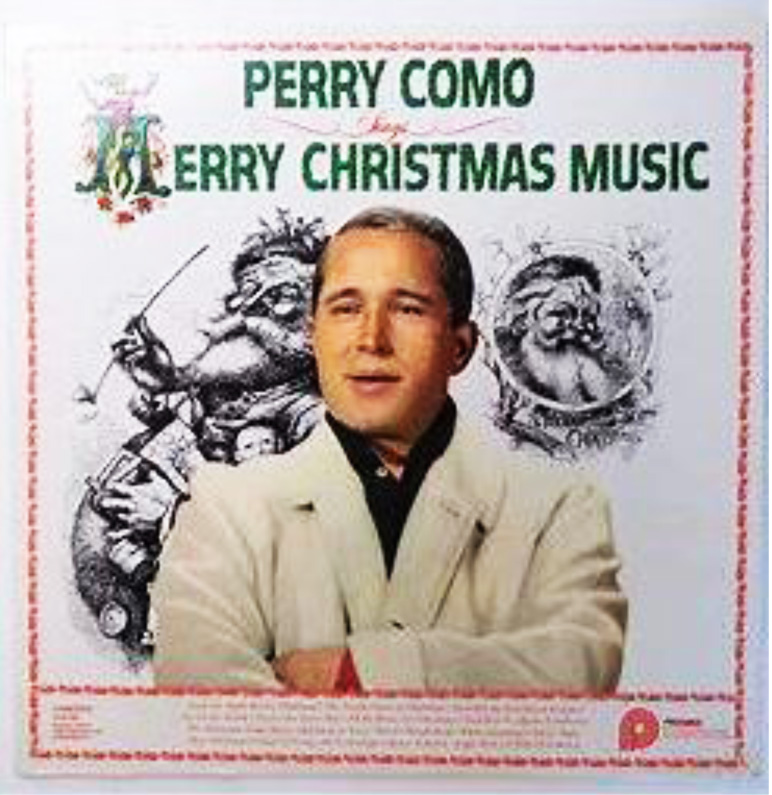As the Christmas season is upon us, I want to do what American poet Robert Frost did and “take the road less travelled by.” Instead of the usual clichés, enjoyable though they may be (presepi, the Feast of the Seven Fishes, Midnight Mass at St. Peter’s, etc.), I’d like to target something much more elusive: the quiet sense of contentment which the Italic people seem to express so beautifully on both sides of the Atlantic. It’s as if the Italians have a secret, yet direct, pipeline to the spirit of the season, simple yet profound.

My first example is from Gubbio, the wonderfully well-preserved, Umbrian medieval hill-town about an hour’s drive from Perugia. Every year, on the Feast of the Immaculate Conception (this year, December 8th), the town lights up what the Guinness Book of World Records now recognizes as the largest Christmas tree in the world.
Actually, that appellation is a bit wobbly. There’s no actual tree but, rather, something even more spectacular: a huge outline of a tree covering miles of other trees on nearby Mt. Ingino, which is then illuminated by over 700 lights. I’ve visited Gubbio twice but only in the summer; I’ve never experienced this event personally. But even pictures of the tree exude a sense of awe and wonder—and community—which stir the Christmas spirit within you.
For more behind-the-scenes details on Gubbio’s amazing tree, click on the link below:
https://lifeinitaly.com/gubbio-lights-up-the-worlds-largest-christmas-tree/
On this side of the Atlantic, Italian Americans once had an annual event which made them glow, too: Perry (Pierino) Como’s Christmas Special.
In a piece called “Growing Up with Perry Como,” writer Lorenzo Carcaterra (Sleepers) describes a cultural event that was de rigeur for most Italian American families from the 1950s through the early 1990s:

“In Italian American homes, watching Perry Como, a barber turned crooner, was a twice-a-year Easter and Christmastime ritual. Italian moms saw him as the complete man—religious, devoted to his wife and family, a gifted singer. Italian fathers sat and watched out of habit, ending up as teary-eyed as their wives when Como hit those Ave Maria high notes. Italian children watched because they had no other choice.
He appeared on screen, surrounded by well-lit trees and fake falling snow, the sounds of an off-camera chorus filling the room—a dignified, white-haired old man with a gentle face and cream-colored sweater.”
Many decades later, now grown and married and with children of his own, Carcaterra laments the passing both of time and this much-honored tradition:
“I think of Perry Como during the holidays. I even tried getting my own family to watch the special this past Christmas—without much success. My German/WASP wife prefers Lou Reed, Dave Edmonds, or Waylon Jennings, three very definite non-Como holiday guests. It took me an entire year to get my five-year-old daughter, Kate, to appreciate The Three Stooges, so Como would be a definite stretch. My nine-month-old son, Nick, would rather chew the edge of a dining-room chair.
So I watched alone, in my living room, a bowl of pretzels to my left, a glass of grappa balanced on my knee. It wasn’t the same. My mother wasn’t jangling her rosary beads between commercials. My father wasn’t sucking a mouthful of seltzer-soaked ice cubes. Ada (a family friend) wasn’t taking coin-shaped earrings on and off. Louie (her husband) wasn’t sneaking shots of grappa in between pretzel bites.
The house was quiet, the kids asleep, my wife in bed reading. It was 9:50 pm when Perry Como began the series of songs which would culminate with the ‘Ave Maria.’ He sat on a bar stool, hands folded across his lap, and sang with an eye toward the studio heavens. At 9:56 pm, as my family and friends before me had done, I wiped a handful of tears from my eyes. It must have been the grappa.”
Thanks to the “Christmas miracle” of YouTube, both the lighting of the Gubbio tree and many of Como’s specials can still be experienced, albeit from a distance.
So whether communally (in a small-town in Italy) or privately (in an American living room), the Italic people know how to harness the warmth and joy of the holiday season.
It took three ghosts in A Christmas Carol to shake Ebeneezer Scrooge out of his inhumanity. Dickens’s short story would have been much shorter if Scrooge had only heard Como’s voice. -BDC

Bill, I have great memories watching those as a youngster. In a very conservative time, it was always fascinating for me to hear my mother express she was practically smitten with him. In this case my father really didn’t mind. I took great pride in the sheer amount of Italian American song stylists I had in my formative years. And now with seasoned musical discernment I fully appreciate the variety of techniques they possessed especially Como, Dean, and Bennet.
I came in at the very tail end of Como and Dean though I knew more about Bennett thanks to his longevity. The amount of Italic “positivity” seen in the American mainstream media once upon a time is truly astonishing, especially compared to 2023.
We’ve gone from icons of pop culture to (as John Mancini says) “cooks and crooks.”
Even in their beach movies, Frankie and Annette were considered “wholesome.” Compare their image to the Jersey Shore cretins. The difference is massive–and depressing.
I am an Italian American who has worked and lived in Italy for many decades. So much to say and adding only to agree with my fellow cultured Italian Americans who understand by experience contrasting realities.
With regards to those that distort today’s Italian reality, I point my finger at many and add the travel agencies who habitually send everyone to pricey Florence, Venice, Rome, 5 terre. The rest of Italy…..ma non si capisce
“Forgive them for they know not what they do”
On the plus side, Puglia is suddenly having a “Rinascimento.” This is perhaps thanks to the resurgence of Matera, which doubles as a giant movie set as well as a fascinating place.
People are discovering that Puglia is both cheaper than Tuscany and has better weather.
And as much as I disliked Stanley Tucci injecting personal politics into his CNN series, I do give him kudos for trying to expose fellow Americans to the many diverse Italian regions.